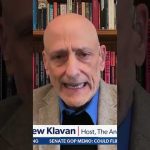The Environmental Protection Agency (EPA) headquarters in Washington, D.C., has become emblematic of broader changes within the agency under the Trump administration. Once bustling with activity, the EPA offices now stand eerily quiet, a reflection of significant policy shifts and workforce reductions. Administrator Lee Zeldin has spearheaded efforts to consolidate office space, cut costs, and streamline operations, aligning with President Trump’s mandate to reduce government spending and bureaucracy. While critics lament these moves as undermining the agency’s mission, supporters argue they represent a much-needed recalibration of priorities.
Zeldin’s recent announcement to consolidate EPA headquarters and save $18 million annually by reducing leased space underscores the administration’s commitment to fiscal responsibility. With federal agencies facing pressure to optimize their real estate footprints post-pandemic, the EPA’s decision to vacate over 300,000 square feet of prime D.C. office space is being touted as an example of prudent stewardship of taxpayer dollars. This shift also reflects broader trends as federal employees increasingly work remotely or under hybrid arrangements. However, the low occupancy rates—averaging just 37% on peak days—raise questions about the efficiency of maintaining expansive facilities.
Beyond physical consolidation, the EPA has undergone substantial structural changes. Offices related to diversity, environmental justice, and scientific research have been shuttered, leading to layoffs of hundreds of employees. Critics view these cuts as a dismantling of the agency’s foundational mission to protect public health and the environment. Yet proponents argue that these moves eliminate inefficiencies and redirect resources toward core functions like enforcing environmental laws and ensuring compliance. Zeldin has framed these changes as a step toward reducing regulatory overreach and promoting economic growth—a vision central to Project 2025, which aims to streamline federal governance.
The administration’s deregulatory agenda has also sparked intense debate. Plans to roll back over twenty environmental regulations—including those governing vehicle emissions, industrial pollution, and water quality—have drawn sharp criticism from environmental groups. However, Zeldin has defended these actions as essential for lowering costs for American families and unleashing domestic energy production. By prioritizing economic growth over stringent environmental controls, the EPA is taking a bold stance against what Zeldin has described as “the climate change religion.” Supporters argue that this approach will restore American manufacturing competitiveness while reducing burdens on industries.
As the EPA navigates its transformation under Trump-era policies, its future remains uncertain. While critics warn of long-term consequences for public health and environmental protection, supporters see an opportunity to refocus the agency on its original mission without succumbing to political agendas or bureaucratic bloat. The quiet hallways of its headquarters may symbolize a leaner, more efficient agency poised to tackle challenges with renewed vigor—or serve as a cautionary tale about the risks of prioritizing cost-cutting over comprehensive governance. Time will reveal whether this recalibration leads to lasting benefits or unintended consequences for America’s environment and economy.




